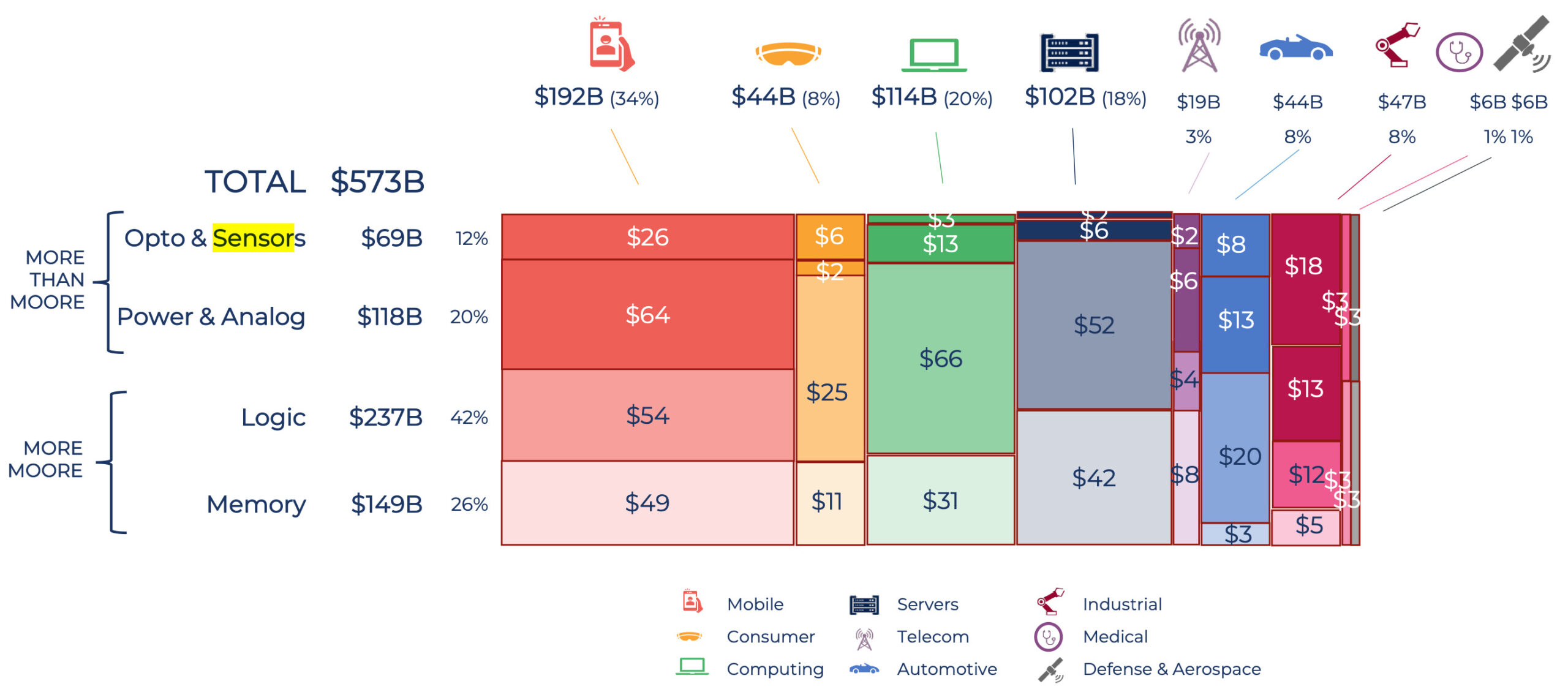Weebit Nano positions itself in US$1 trillion market, investors encouraged to be patient

Weebit Nano aims for leading role in $1T market; patience advised. Image: Getty.
- Semiconductor industry poised to exceed $1 trillion
- ReRAM technology promises faster, efficient chips
- Weebit’s CEO is very optimistic about its future and ReRAM demand
Special Report: Weebit Nano (ASX:WBT) ReRAM is positioned to lead the charge in next-generation memory technology, as the semiconductor industry is set to head towards a $1 trillion valuation.
The semiconductor industry is on the brink of extraordinary growth, with projections indicating it could surpass US$1 trillion in just a few years from now.
The surge is driven by a booming demand for chips (logic, memory, sensors) across a variety of sectors, including automotive, artificial intelligence, and the Internet of Things (IoT).
With the world increasingly reliant on advanced technology, investors have a unique opportunity to capitalise on this expanding market as the potential for attractive returns in the space looks very promising.

Source: Yole for 2022
One ASX stock that’s ready to capitalise on this mega trend is Weebit Nano.
Weebit is at the forefront of developing the Resistive RAM (ReRAM) technology, which delivers a high-performance, energy-efficient solution for next-generation chip designs.
At last week’s Semiconductor Australia 2024 conference, Weebit’s CEO, Coby Hanoch, delivered a presentation highlighting the vital role of ReRAM chips within the semiconductor industry – a sector now regarded as the single most important one on the planet.
“I believe, whether we like it or not, Weebit has become kind of a forefront of this crusade to make Australia understand the importance of semiconductors,” he said.
But Hanoch lamented that while countries worldwide are ramping up their semiconductor initiatives, Australia remains conspicuously absent.
“To the best of my knowledge, there is not much happening here [in Australia]” he asserted, pointing out the robust initiatives in the US with the CHIPS Act, Europe’s equivalent Chips Act, and similar initiatives by most advanced countries.
He added that “practically every government in Asia”, including China, India, Japan, Korea and Taiwan, is actively pushing forward with semiconductor incentives. In 2021-2023 alone over US$800B were invested in building fabs around the world. None of this was in Australia, even though it has ideal conditions for a fab. All Australia needs to do is announce tax incentives and companies would line up to build fabs in Australia.
“Australia is so far behind that there’s really so much more to do,” Hanoch said, calling for a concerted effort to bring Australia into the global conversation about semiconductors.
ReRAM tech set to power next-gen innovations
Weebit Nano’s cutting-edge proprietary ReRAM technology stands out in the memory chip market due to its potential to deliver superior performance – such as significantly faster data processing speeds, and lower power consumption.
This technology also has more cost-effective manufacturing processes compared to traditional memory types like flash, or other new technologies like Magnetic RAM (MRAM).
The ReRAM technology developed by Weebit is particularly well-suited for a range of applications, including artificial intelligence, Internet of Things (IoT) devices, and other high-performance computing environments.
These applications require memory solutions that not only perform efficiently but are also faster and consume less energy.
Now read more about it: Weebit Nano’s ReRAM technology primed to shake up booming memory chip market
ReRAM faces hesitation but contracts are ‘extremely sticky’
Meanwhile, the company has made significant strides in advancing the ReRAM technology.
Currently, Weebit’s R&D team is making progress to advance high-temperature automotive qualification tests and testing its 22nm FD-SOI silicon, which has been showing promising reliability.
The company filed more than 70 patent applications,, fortifying protections around its R&D efforts. Only in the last quarter the company was granted an additional nine patents.
Weebit is now in discussions with over a dozen leading foundries and integrated device manufacturers (IDMs) as potential clients, in addition to many leading product companies.
Last year, Weebit signed an agreement with DB HiTek, a South Korean semiconductor manufacturing company with whom Weebit is progressing towards the qualification of ReRAM demo chips, expected to be completed by mid-2025.
Teaching clients like DB HiTek how to produce ReRAM, referred to as “transferring the recipe,” typically takes around nine months. Following this, the fabrication and qualification processes can extend the timeline to 18 to 24 months.
Hanoch acknowledged the delicate nature of this manufacturing process, explaining, “Every ReRAM bit has its own signature,” which adds another layer of complexity for companies looking to implement this technology.
Once contracts are signed, however, Hanoch said that the relationships are “extremely sticky”.
“These agreements normally last decades, not years, but decades,” he said, adding that these decisions are therefore not taken lightly by potential clients.
Hanoch said that the initial investment in training and technology transfer makes it costly and complicated for clients to switch to another IP provider after deals are signed.
He’s encouraging investors to be patient, citing the challenges customers have with such an important strategic decision on a new technology.
Although many companies can see the benefits of ReRAM, there’s a hesitation to adopt it.
Clients are looking for reassurance in the form of “silicon proven” technologies, Hanoch said, which requires seeing mass production before they feel confident in moving forward.
“Our biggest competitor is therefore human fear,” referring to the hesitance enterprises exhibit due to the perceived risks associated with adopting any new technology.
ReRAM is the future, and Weebit is ready to lead
Despite these hurdles, Hanoch remains very optimistic.
He believes that demand for ReRAM will be universal across the industry, asserting that “they all need ReRAM” and that it’s only a matter of time before companies start integrating it into their offerings.
Weebit’s negotiations with several potential partners could soon result in announcements of new deals.
“I think eventually all of them will be our customers. I don’t think it’s a matter of if; I don’t think they have a choice. I mean, they all need ReRAM.”
Eventually, he says, ReRAM will not just be a viable option, but an essential technology for future advancements in the memory space.
“I am more optimistic than ever about the potential of Weebit’s next-generation memory technology.”
This optimism has been reflected in the Board’s decision to tie Weebit’s executive team’s annual equity grants for FY25 to performance targets centred around new revenue-generating agreements.
” 100% of my equity compensation is tied to performance. This is my way to show the shareholders my level of confidence in the potential of Weebit.
“And we’re not under cash pressure right now… I’m just 100% totally focused on bringing in the business.”
This article was developed in collaboration with Weebit Nano, a Stockhead advertiser at the time of publishing.
This article does not constitute financial product advice. You should consider obtaining independent advice before making any financial decisions.
Related Topics
SUBSCRIBE
Get the latest breaking news and stocks straight to your inbox.
It's free. Unsubscribe whenever you want.
By proceeding, you confirm you understand that we handle personal information in accordance with our Privacy Policy.







